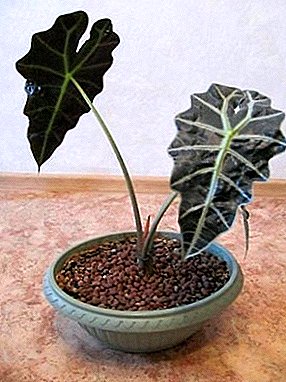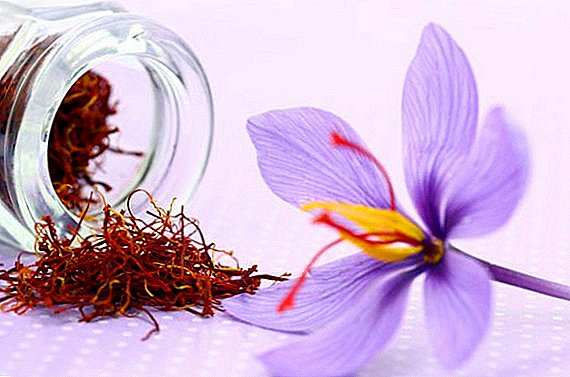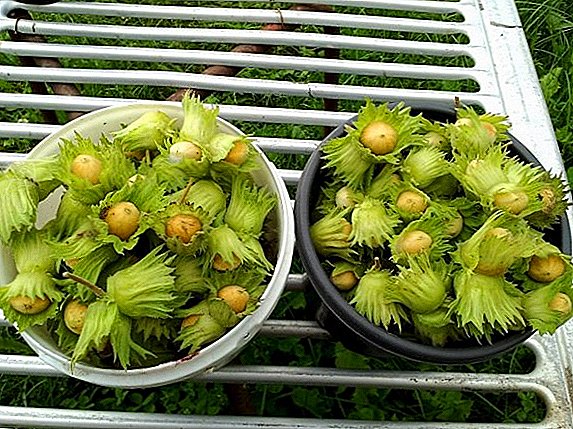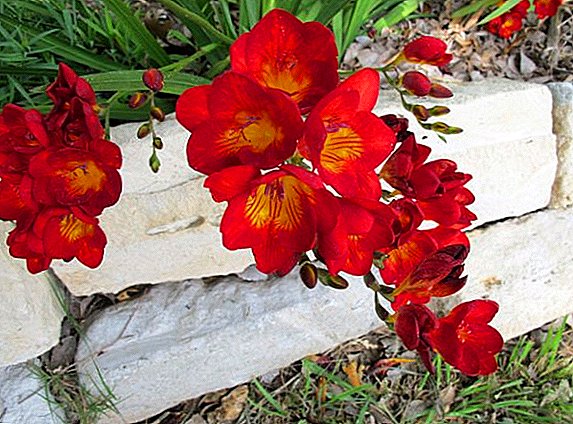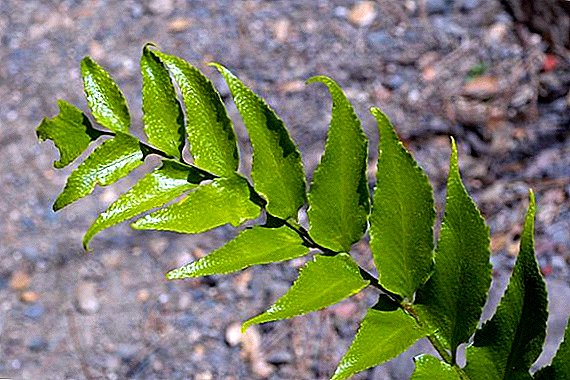 Tsirtomium - One of the most beautiful fern species that can decorate any home or office interior. The people are also known as sacred ferns, holly or holly. This unpretentious, easy-to-care and compact plant is ideal for growing at home. The plant comes from South Africa, Oceania and tropical Asia. Of all the known types of circomium in home gardening, only one is cultivated - sickle-shaped tomtrium. Despite its tropical origin, this type of fern is distinguished by high cold resistance, therefore it tolerates equally well dry air in an apartment and moderate frosts of southern latitudes in open ground.
Tsirtomium - One of the most beautiful fern species that can decorate any home or office interior. The people are also known as sacred ferns, holly or holly. This unpretentious, easy-to-care and compact plant is ideal for growing at home. The plant comes from South Africa, Oceania and tropical Asia. Of all the known types of circomium in home gardening, only one is cultivated - sickle-shaped tomtrium. Despite its tropical origin, this type of fern is distinguished by high cold resistance, therefore it tolerates equally well dry air in an apartment and moderate frosts of southern latitudes in open ground.
Did you know? In medieval England, the fern was considered a plant that protects from witches. If you cut it, then in the place of the cut will be visible marks that resemble the Greek letter "chi" - the first letter in the name of Jesus Christ.
Indoor fern: species and description
 Sickle-shaped phanerophleibia, or fern of circomium, is a representative of the family Thyroid, a compact plant, not exceeding 50-60 cm. Fronds are dense, tough, leathery, bluish-gray. They have a feather-like structure and a sickle-curved shape on the tops, with serrated edges on the leaves, for which tsirtrium is called sickle-shaped. At the bottom of the leaf plate are brownish clusters of spores, covered with a transparent film.
Sickle-shaped phanerophleibia, or fern of circomium, is a representative of the family Thyroid, a compact plant, not exceeding 50-60 cm. Fronds are dense, tough, leathery, bluish-gray. They have a feather-like structure and a sickle-curved shape on the tops, with serrated edges on the leaves, for which tsirtrium is called sickle-shaped. At the bottom of the leaf plate are brownish clusters of spores, covered with a transparent film.
The rhizome of cirtomium is densely covered with wide brown scales. The main feature of sickle-shaped tsitromium is a very slow growth at the beginning of the growing season: in a year only a few new leaves can appear in an adult plant. This fern species is also distinguished by the fact that it tolerates dry air well. This makes the fern crescent crescent perfect room fern, taking care of it at home is very simple: it is not afraid of heat or drafts, does not require the maintenance of high humidity and, moreover, has excellent decorative qualities.
Today, about 12 species of fern are known. In addition to sickle, the most famous:
- Carytome-shaped tiltomium is a fern with a short, straight, tuft-like rhizome covered with scales. It reaches a height of 70 cm, monomorphic. Fronds are leathery, single-leaved, oblong lanceolate, gray-green in color with filiform scales from below. Feathers are large, pointed at the base, spiky at the edge, finely toothed;
- citromium large-leaved. Reaches a height of 70 cm, monomorphic fronds are arranged on the stalks of a yellowish-brown color. The leaf plate is thin, pinnate, oblong, lanceolate. Feathers are rounded to the base and pointed at the end of the plate, the final feather is longer. Sori (spores) are green or gray-white, located on the lateral feathers below the leaf plates;
- Fortchun's Circulium - can also be called the home representative of the cirmonium fern species. This species has scaly, orange roots that are almost completely underground. Fronds are large, shiny, gray-green, curved, leathery, pinnately dissected, grow straight out of the ground and are located on a long petiole. On their lower side are disputes. The length of the leaf plate together with the stem reaches 50-60 cm, and the Forchun's fern itself has a height of 35-60 cm.
Choosing a place for circomium in the room
Perhaps the correct choice of a place for a tsitromium is the only important point of its successful growth, otherwise there are no fundamental conditions.
What should be the lighting
 Home fern does not tolerate direct sunlight, because of them its growth slows down, and the leaves turn yellow. Ideal for circomium diffused light or partial shade. It is best to place the container with fern near the window facing north. When placed on the south side, be sure to shade the window to avoid direct sunlight.
Home fern does not tolerate direct sunlight, because of them its growth slows down, and the leaves turn yellow. Ideal for circomium diffused light or partial shade. It is best to place the container with fern near the window facing north. When placed on the south side, be sure to shade the window to avoid direct sunlight.
Optimum temperature and humidity for growing
A moderate room temperature - + 18 ... +20 ° C is suitable for growing cirtomium. Even if it is slightly above the norm, it will not affect the ornamentation of the fern, it is able to endure a small drought. However, if the heat is held for a long time, then the plant should be moved to a cooler place for a while. In the winter period, when the heating is turned on, it is necessary to monitor the temperature, if it rises above +22 ° C, then tsirtomium should be placed on a stand filled with water. In winter, the temperature of the fern should be at least +10 ° C.
Soil for the cultivation of circomium
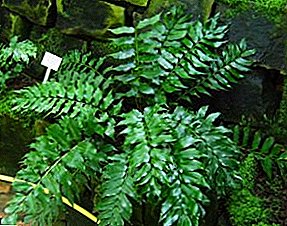 The soil for the fern should be light, loose and good air flow. Shop mix will suit or you can prepare the substrate yourself. To do this, mix peat, leaf soil and sand in a ratio of 2: 1: 1. It is also good to add sphagnum and charcoal, a little pine bark. Required layer of drainage of small pebbles (1-2 cm).
The soil for the fern should be light, loose and good air flow. Shop mix will suit or you can prepare the substrate yourself. To do this, mix peat, leaf soil and sand in a ratio of 2: 1: 1. It is also good to add sphagnum and charcoal, a little pine bark. Required layer of drainage of small pebbles (1-2 cm).
Did you know? It is circomium that is widely used for gardening offices, rooms, winter gardens, hospitals, child care facilities.
Features of landing and reproduction of room tsirtrium
Reproduction of ferns in the home environment of circomium is possible in two ways: by dividing the rhizomes and spores.
Division of rhizome
To divide the rhizomes take adult uterine plant, which is divided into several equal parts so that each seedling has several points of growth. The division is carried out in the spring. The resulting seedlings are planted in the prepared soil - a mixture of leafy soil, peat, sphagnum and sand.
Spores breeding
 The second option is somewhat more complicated, since the fern zirthium reproduces only in special greenhouse conditions. Before disembarking, disputes need to be folded in a paper envelope and dried. Then in the tank for planting lay a layer of drainage of small pebbles or broken bricks and wet peat. Pour about 5 cm of water on peat, pour out spores and cover with glass or plastic lid. For spore germination, it is necessary to constantly maintain a temperature of + 20 ... +22 ° C, and also place the container in a shaded place. Spores will germinate in a few months, subject to the care recommendations. Replant plants need when they grow to 5 cm.
The second option is somewhat more complicated, since the fern zirthium reproduces only in special greenhouse conditions. Before disembarking, disputes need to be folded in a paper envelope and dried. Then in the tank for planting lay a layer of drainage of small pebbles or broken bricks and wet peat. Pour about 5 cm of water on peat, pour out spores and cover with glass or plastic lid. For spore germination, it is necessary to constantly maintain a temperature of + 20 ... +22 ° C, and also place the container in a shaded place. Spores will germinate in a few months, subject to the care recommendations. Replant plants need when they grow to 5 cm.
Home care for cirtomium
Caring for a fern at home is the observance of standard measures: watering, feeding, transplanting and maintaining the optimum temperature.
How to water the tirpomium
Cytromium sickle should be watered regularly. This is especially important during the growing season, when the fern needs as much nutrition as possible. In the season from March to October, and adult specimens require abundant watering, and if the plant is kept in a warm place in winter, even at this time it will need to be watered quite often. When the content of tsirtomium in a cool place, watering is somewhat reduced.
Important! Before watering the fern, you need to make sure that the soil in the pot is dry enough, as tartarium does not tolerate stagnant water.
Fertilizer room fern
 The fern is not very picky feed dressing. It is necessary during the growing season of the plant; during this period mineral or organic fertilizers are applied once a month. For adult plants, it is enough to feed once every three to four months.
The fern is not very picky feed dressing. It is necessary during the growing season of the plant; during this period mineral or organic fertilizers are applied once a month. For adult plants, it is enough to feed once every three to four months.
Important! You need to make only mineral fertilizers, diluted twice, as too high a concentration and salinization of the substrate can damage the root system.
Circumcium pruning
Since it is quite simple to care for indoor ferns, it does not require special measures to form a bush. His slender fronds by nature have the correct form and independently form a spectacular, symmetrical rosette. Only old, dried and yellowed leaf plates, the removal of which stimulates the growth of young leaves, are subject to cutting as needed.
Circulation
 In order to always have a beautiful and healthy fern in the house, it needs to be transplanted as the roots grow. This is usually done in the spring and transplanted fern until its roots need a pot with a diameter of 18-20 cm. As soon as the rhizome of the fern reaches a similar size, it is no longer necessary to repot the plant. Now every year it will only be necessary to replace the top layer of the soil, which should be loose and light, so as not to slow down the already not fast growth of the tsitrium.
In order to always have a beautiful and healthy fern in the house, it needs to be transplanted as the roots grow. This is usually done in the spring and transplanted fern until its roots need a pot with a diameter of 18-20 cm. As soon as the rhizome of the fern reaches a similar size, it is no longer necessary to repot the plant. Now every year it will only be necessary to replace the top layer of the soil, which should be loose and light, so as not to slow down the already not fast growth of the tsitrium.
The main pests and diseases of circomium
Now consider how to care for the fern at home to protect it from possible diseases and pests. No serious viral diseases dangerous to tsirtromium have been found to date, but it can be attacked by parasitic insects, such as the scale insect and the mealybug. The shield is an insect with a wax shell, which sucks cell sap from a plant. As a result, the plant turns yellow, leaves fall, and the fern can die. To fight the pest is not easy, because the scythe is immune to many chemical drugs. Only insecticides Aktellik and Fitoverm can help.  Another possible pest of the fern of tsirtomium is the mealybug. Due to the appearance and cotton-like wax substance that he emits, he was called hairy lice. Both the larvae and the adults of their individuals suck the fern juices, which leads to a halt in growth. To fight with a chertz a usual spraying is carried out - they do not tolerate moisture. It also helps to wash the leaf plates with water and milk or with microbiological preparations, such as "Lepidocide". In the case of mass destruction, the treatment must be performed twice. It is also necessary to promptly remove dried parts of the fern to avoid the proliferation of parasites. Many diseases of a fern of a tsirtomium are shown owing to the wrong care of it in house conditions.
Another possible pest of the fern of tsirtomium is the mealybug. Due to the appearance and cotton-like wax substance that he emits, he was called hairy lice. Both the larvae and the adults of their individuals suck the fern juices, which leads to a halt in growth. To fight with a chertz a usual spraying is carried out - they do not tolerate moisture. It also helps to wash the leaf plates with water and milk or with microbiological preparations, such as "Lepidocide". In the case of mass destruction, the treatment must be performed twice. It is also necessary to promptly remove dried parts of the fern to avoid the proliferation of parasites. Many diseases of a fern of a tsirtomium are shown owing to the wrong care of it in house conditions.
For example:
- if the plant grows weakly and the flower as a whole becomes sluggish, and a saline deposit forms on the soil surface near the fern, this may be the result of irrigation of tsirtrium with too hard water;
- leaves lose color, become lethargic and translucent, the reason for this is the ingress of intense direct sunlight;
- the leaf plates turn pale, and at the ends become yellowish or brown, it means that the circomium does not have enough power or the size of the pot is incorrectly chosen for growing it;
- yellow plates with brown spots may be the result of too high air temperature in the room;
- if young leaves curl, fall off as soon as they are touched, and the fern looks generally faded and weak, it means that it freezes or suffers from cold drafts.




